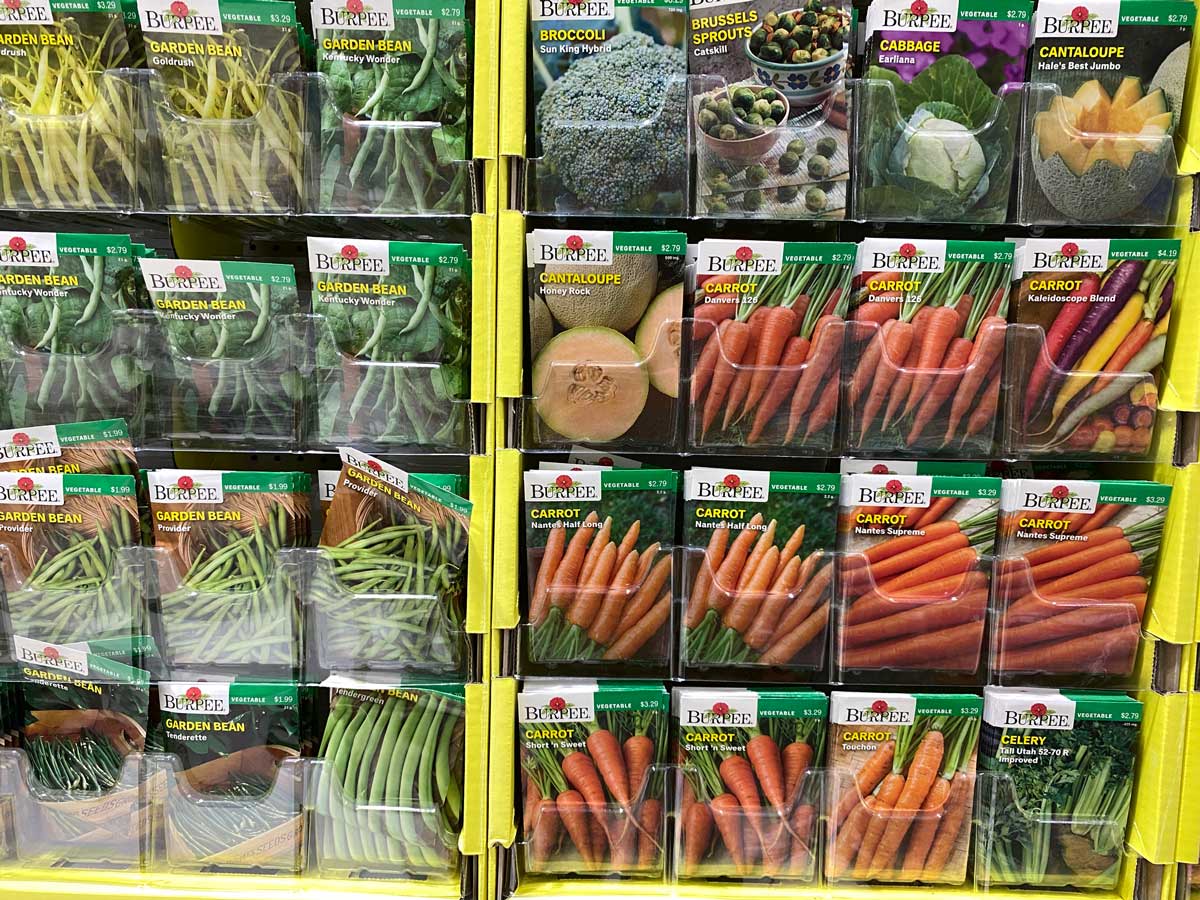For the first time, genetically modified seeds have been made available to the common gardener for home use in the form of a purple tomato. But the real question to ask is, what are GMO seeds, and is this something to be excited about, or should we be concerned? Let’s dive in together.
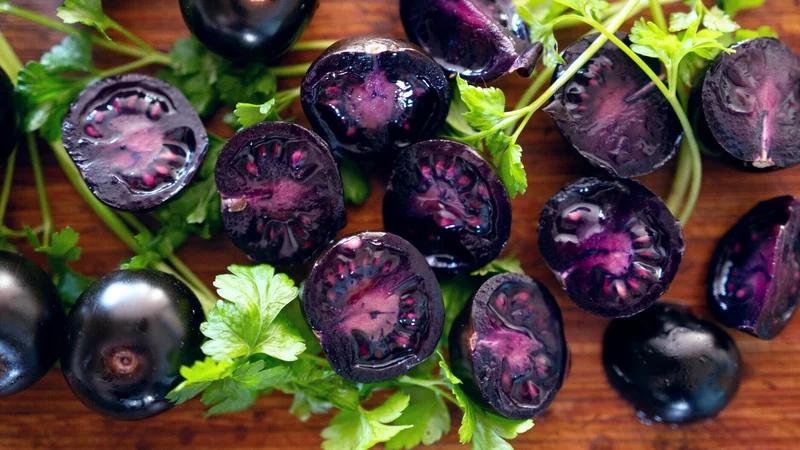
In recent news, there has been a brand new GMO seed supply released to the general public. In this article, it says,
“The new tomato variety contains purple antioxidants called anthocyanins (the healthy nutrients in blueberries, blackberries and eggplants). Thanks to a bioengineering approach that combines tomatoes with two genes from an edible flower (snapdragon), Norfolk’s tomatoes are the only varieties that have purple antioxidants in the flesh and the skin.”
Norfolk Healthy Produce
Included in this article are the results of a study on how many American consumers would be interested in eating, purchasing and growing the purple tomato, knowing that it’s bioengineered (often referred to as genetically modified organism or GMO).
Now, what we don’t know is how large this study was, who the people were they surveyed or any other details (this wasn’t listed in the article). The survey results showed a whopping 80% of American consumers were interested in GMO tomatoes and only 5% of consumers were not interested.
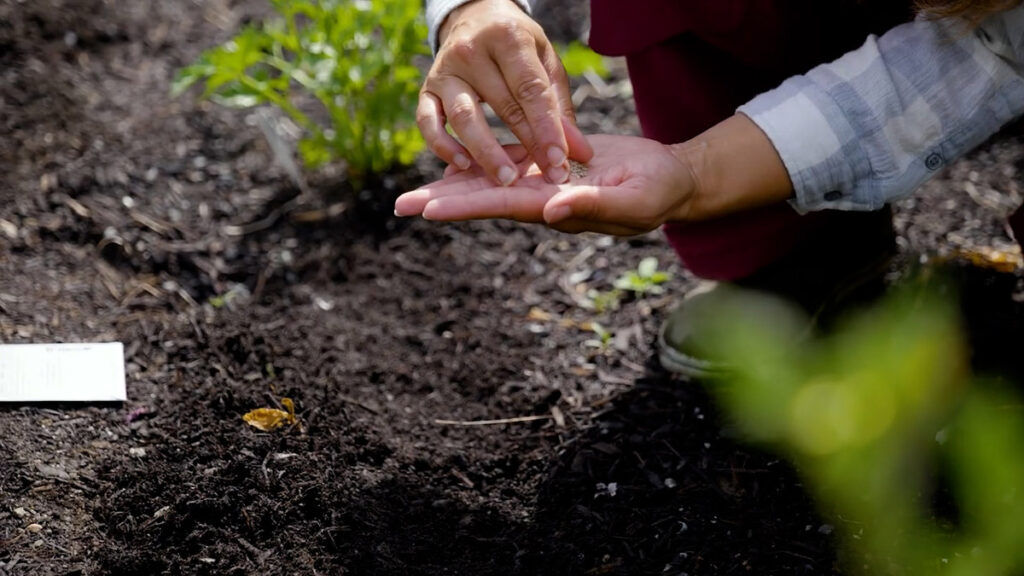
Table of Contents[Hide][Show]
Seed Terminology
Because there is a lot of misinformation out there, I want to first clear the air on some of the common seed terminologies and what these terminologies actually mean.
Hybrid
A hybrid plant is not a genetically modified or GMO plant. There are many people who get the two confused, but hybrid does not mean GMO.
In botany, a hybrid is the offspring of two plants of different varieties, cultivars, species or, rarely, even genera. Plants must be fairly closely related to interbreed, such as two bean varieties or two tomato varieties.
You cannot take a raspberry and naturally crossbreed that with a pepper plant to get different genetics. It simply won’t work because they’re not the same species.
The cool thing is you can create your own hybrid plants at home, and many home gardeners don’t realize this often happens without even trying in their own gardens.
Hybrids, in and of themselves, are not bad. However, there’s another type of hybrid to be aware of.
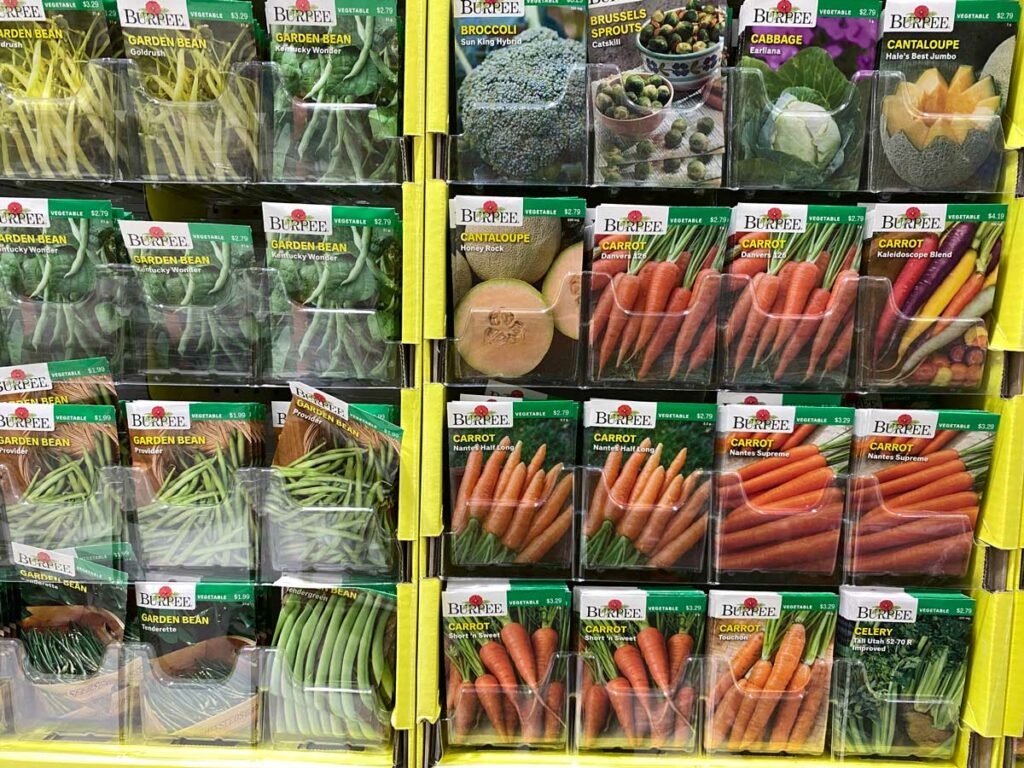
F1 Hybrid
This is the kind of hybrid that most people are buying from seed companies. F1 Hybrid plants are the first generation of mixing or crossing two varieties together. The thing about these hybrids is that they haven’t been stabilized.
In other words, you can’t seed save from them and expect to get the same plant to grow from those seeds.
Since F1 hybrids are so popular among gardeners (because the majority of gardeners don’t save all their own seeds), this is what most seed companies offer. Gardeners love them for their higher-than-average crop yield, plant stamina (like tolerance to adverse growing conditions and pests), etc.
An example of what can happen with F1 hybrid seeds is that years ago, before I really understood seeds, we had a zucchini plant self-seed in the garden from where I had planted them the year before (using F1 hybrid zucchini seeds).
The plant grew strong and vigorous and produced these beautiful black zucchini fruits. However, when it came time to harvest, those zucchini were the most bitter and unedible zucchini I’ve ever grown.
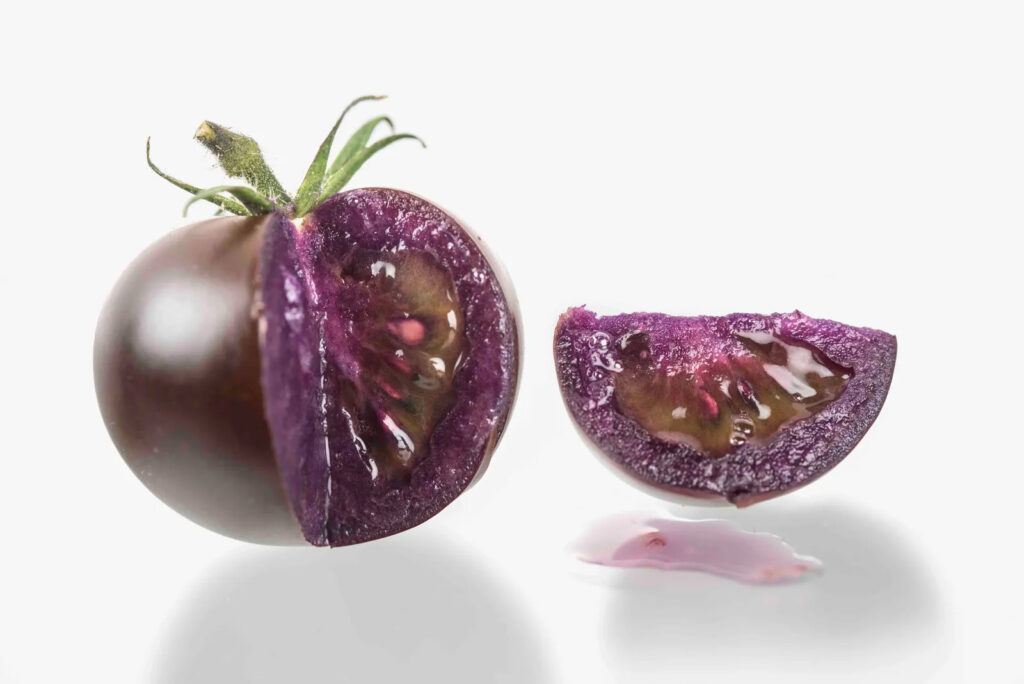
Genetically Modified Organism (GMO)
Prior to this year, there were no GMO seeds sold to the home gardener. But that has recently changed with the purple tomato.
While hybrid plants originated from breeding techniques long used by humans, GMOs are different in that they’re made in the laboratory. Scientists will modify the seeds by inserting specific genes into the genetic material of a plant.
These genes can come from very different organisms that would never naturally cross with the plant. In the case of the purple tomato, they’ve taken snapdragon genes and put them into the tomatoes to increase the anthocyanins throughout the fruit.
There are many kinds of GMO crops available today. To read more about these, check out this article from the National Library of Medicine.
Seed Patents
What I don’t love about GMO seeds is that they’re patented. You cannot legally grow and sell for-profit crops from GMO seeds without a certification to do so.
With these laws for commercial crops, is it possible we could see these laws crossing over to the home gardener? I don’t have a crystal ball to answer this, but I certainly don’t want to play around with my home-garden and put myself at risk.
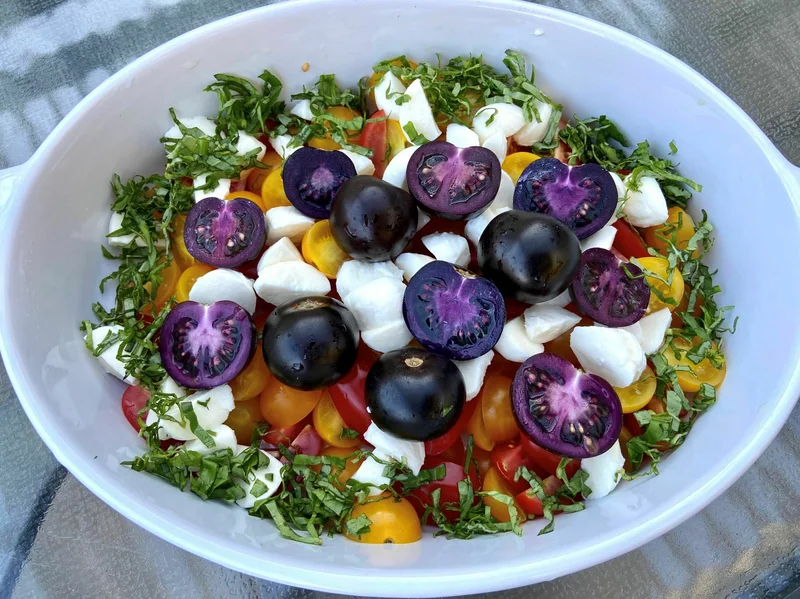
Concerns About GMO Seeds & GMO Crops
First of all, genetically modified seeds would never happen in nature. That’s my own personal red flag. Though not the only deciding factor, I think when we take something outside of the way God intended seeds to pollinate, that must be recognized and considered.
Second, we don’t actually have long-term studies on the effects of consuming genetically modified foods. So, we don’t know what long-term implications there will be. Essentially, we’ve become the experiment because these GMO ingredients have been allowed into foods without long-term studies.
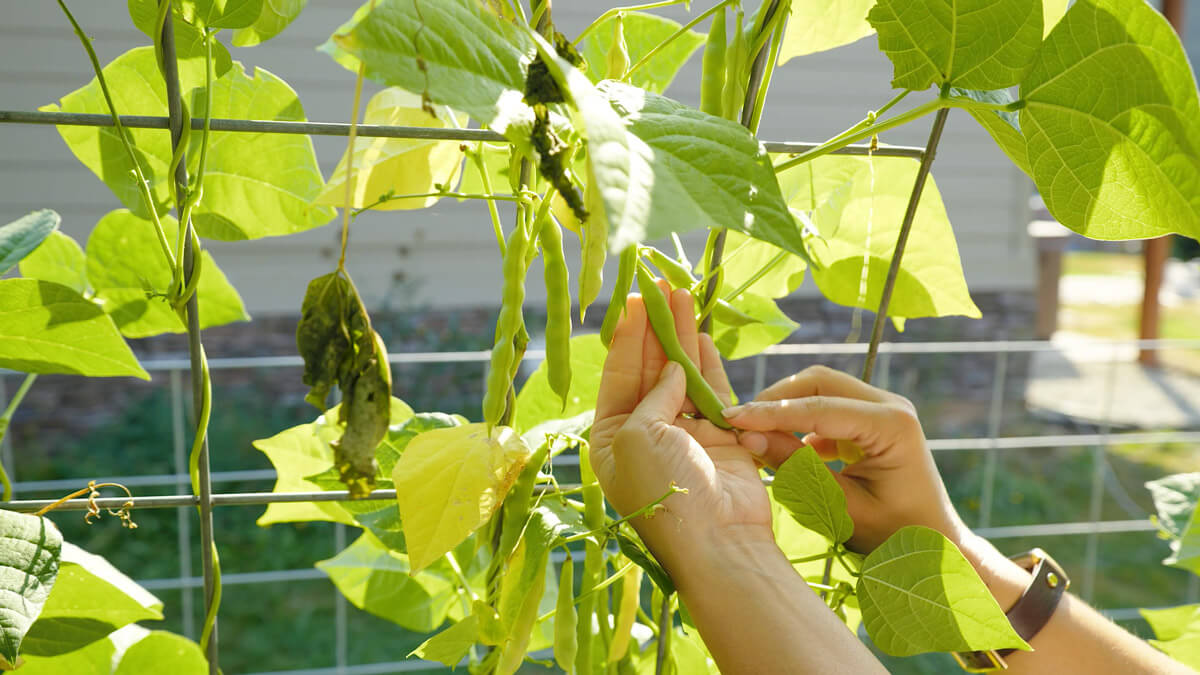
Allergies
If you don’t know what food items were spliced into the genetics of a specific food, there are chances of an allergic reaction.
According to the FDA, tests are run on these foods by those who are developing them to ensure that allergens aren’t transferred from one food to another. These researchers “suggest” that GMO foods “are no likelier to trigger allergies than their non-GMO counterparts.” (Source)
But we can see multiple tests that have been done on GMOs where the data shows the opposite. For example, bean plants that were genetically modified to increase cysteine and methionine content were discarded after the discovery that the expressed protein of the transgene was highly allergenic (Source).
Cancer
Since DNA mutations cause various forms of cancer, some people fear that eating foods with added genes may affect your DNA.
“The American Cancer Society (ACS) has stated that there’s no evidence to link GMO food intake to an increased or decreased risk of cancer, and there is no evidence that eating GMOs will change your DNA.” (Source)
However, more long-term human research is still needed. So, do we want to blindly trust that the data won’t reveal the exact opposite over time? Long-term testing results don’t exist. Let’s not be the guinea pigs!
Herbicide Use
Most GMO crops are designed to be resistant to herbicides (such as Roundup). This allows farmers to spray their crops with herbicides to kill surrounding weeds without damaging their crops.
Glyphosate (an ingredient in Roundup) has been linked to various diseases, including cancer. New evidence shows that glyphosate exposure may increase the risk of non-Hodgkins lymphoma by 41%.
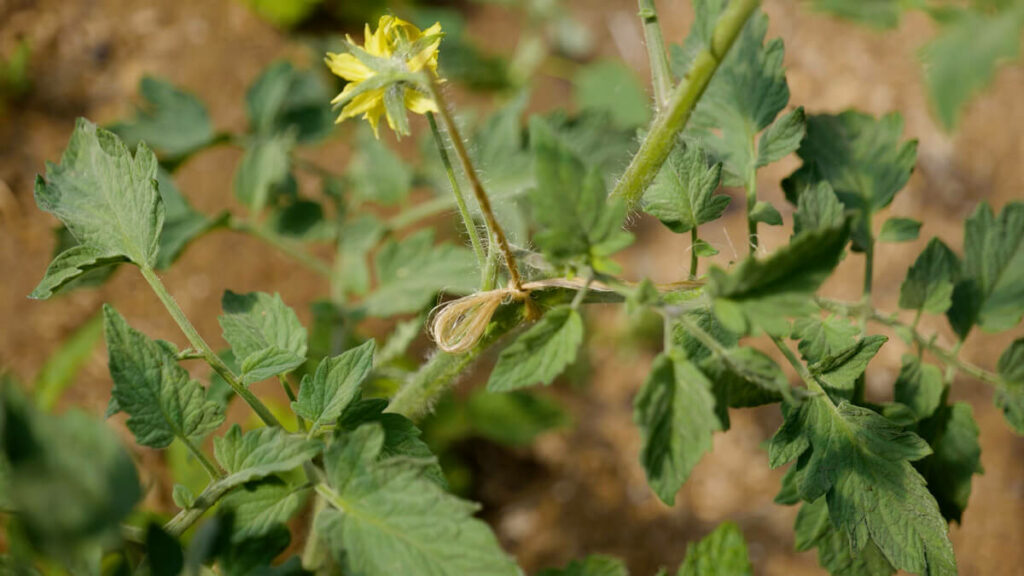
How Seeds Pollinate
A plant blossom has a male and a female end (pistol and stamen). The pollen from each of these ends must pollinate (or connect) in order to produce fruit.
Self-Pollinating
A self-pollinating plant is a plant that has the pistol and the stamen within a single blossom. These varieties generally self-pollinate before the blossom even opens.
There may be a blossom here and there that doesn’t self-pollinate. These blossoms can still cross-pollinate; however, this is also where you may get some genetic drifts if they cross-pollinate with a different variety (within the same species).
For backyard gardens, these self-pollinating plants are often tomatoes, beans, peas, and other plants from the legume family.
When seed-saving from these plants, you may want to take some precautions, such as using a mesh bag to cover a few blossoms to avoid cross-pollination. You would then tag those specific fruits to know those are the ones you’ll want to save the seeds from. (Learn more about seed saving.)
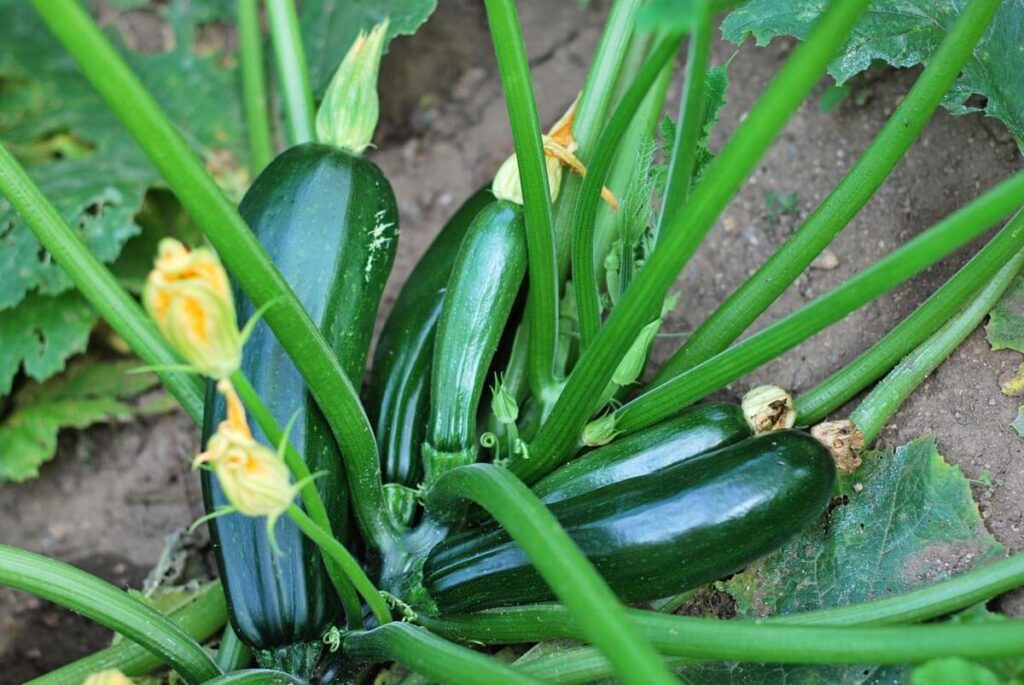
Cross-Pollination
This is a plant that produces a male and female part of the plant, but they’re not present in the same blossom. Some blossoms contain the male part (stamen), and some blossoms contain the female part (pistol).
This is where you can get seed purity by keeping it from cross-pollinating with other plants (by using a mesh bag and self-pollinating the plant from the same plant).
With cross-pollinating plants, it’s important to keep your plants from cross-pollinating. So with corn, winter squash, summer squash, etc, they will cross-pollinate.
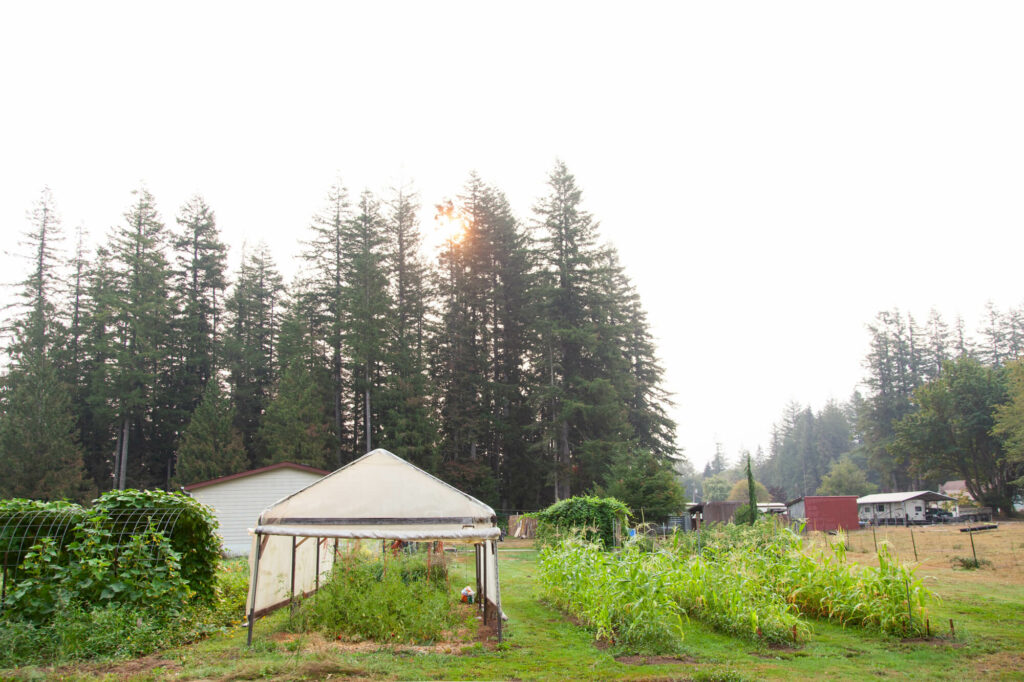
The GMO Cross-Pollination Dilemma
Since crops can cross-pollinate, you may plant corn in your home garden and end up with GMOs (or other genetics) in your crop you didn’t intend.
This became a huge issue with large commercial farmers. Since GMO seeds are patented and you have to have a certificate to verify that you can grow those crops, Monsanto would frequently test corn from various farms to ensure they weren’t growing their GMO crops without permission.
What happened is that corn from farms that didn’t plant a GMO crop were testing positive for the genes found in the GMO seeds, so Monsanto was suing these farmers. But it wasn’t that they were planting GMO seeds; they were just being cross-pollinated from neighboring farms that did plant the GMO seeds.
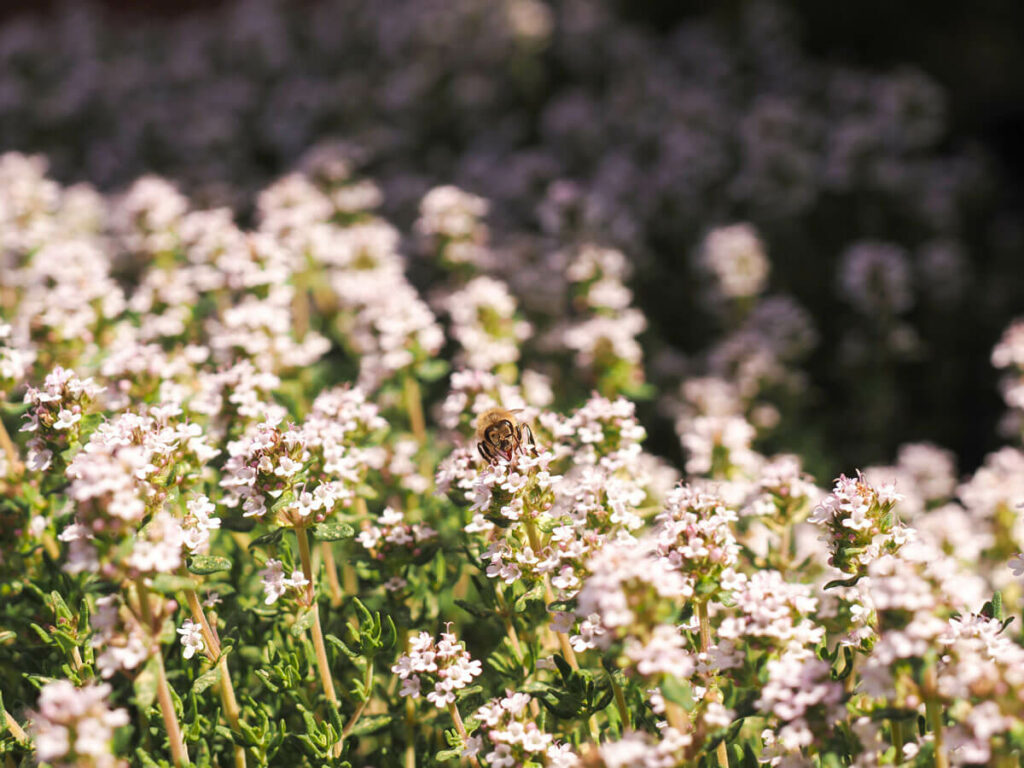
Open Pollination
Open-pollinated means the seeds have not been hybridized at an F1 level. If it’s open-pollinated, you can seed save from that plant successfully (as long as you’ve prevented cross-polliation).
This seed will come back true to its parent (the plant you saved the seed from).
Heirloom Seeds
All heirloom seeds are open-pollinated; however, not all open-pollinated seeds are heirloom.
To be classified as an heirloom seed, it has to be open-pollinated. Some say it has to be stabilized by 50-100 years.
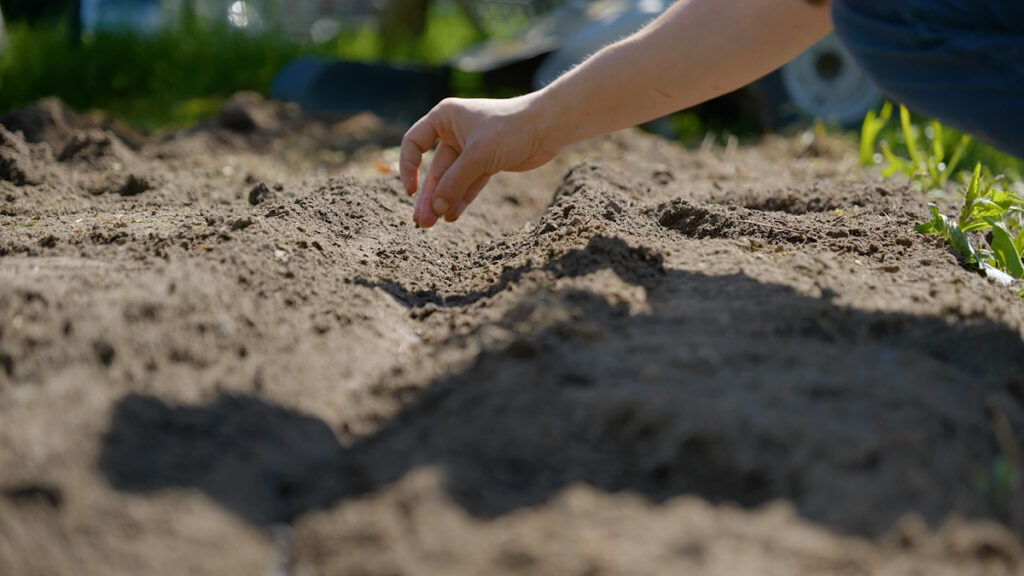
What to Buy For Your Garden
If you are looking to make sure your crops are not genetically modified, and that you can seed save (provided you’re following proper seed-saving protocols), then you definitely need to have open-pollinated or heirloom. These are two of the reasons that heirloom seeds are my favorite.
This is all we’ve grown for the past 15 years. When we made the swap from F1 Hybrids to all heirloom or open-pollinated seeds, I did not notice a difference with pest pressure or disease (which are common concerns when it comes to heirloom varieties).
Be Vigilant
Prior to a few weeks ago, we just needed to be on guard against the foods we purchased in the grocery store. Being a label reader is important, and avoiding foods listed as genetically modified or bioengineered. And knowing which fruits and vegetables are typically GMO.
Typically speaking, these are sugar beets, sweet corn, soy, etc.
Now, we must also realize that it’s only a matter of time before more GMO seeds are being sold to the common gardener.
Verse of the Week: Genesis 1:11-12

Azure Standard
With this one major change in GMO seeds, it’s more important than ever to trust your seed source.
If you’re looking for a great seed source, you can check out the post I’ve done on where to buy heirloom garden seeds, but you can always count on Azure Standard as well.
They have a variety of garden seeds to choose from. You’ll know you’re always getting the best quality and non-GMO. Plus, what I love is that if you miss your window for starting seeds indoors, you can purchase starts from Azure (Ellie’s Eden plant starts are typically sold in early March through the growing season, while supplies last).
You can’t beat the price, and the quality is incredible (the starts are also guaranteed!).

More Posts You May Enjoy
- Intro to Heirloom Seeds
- 5 Reasons You Need Heirloom Seeds
- List of Heirloom Varieties to Grow in the Garden This Year
- Heirloom Flowers for Natural Weed Control in the Garden
- 10 Unique Heirloom Vegetables to Grow
- How to Save and Store Your Heirloom Garden Seed
- Garden Planning in Winter
- Seed Packet Information – How to Read Seed Packets for Gardening Success
- The Ultimate Seed Starting Guide- Planning, Starting & Mistakes to Avoid
- Potting Up Seedlings & How to Separate Seedlings
- Seed Saving – How to Save Garden Seed
- The Family Garden Plan
- The Family Garden Planner
[fusebox_transcript]
